Text
How “The Umbrella Academy” Surprised Me
In many ways, good and bad.
This is a spoiler-free review of season one of The Umbrella Academy
I remember when The Umbrella Academy comics came out. It was 2007 and I was a broke thirteen-year-old living in suburban Australia (a cultural wasteland!) so I never actually read them, but as a rabidly obsessed My Chemical Romance/Gerard Way fan, I managed to fold The Umbrella Academy into my identity anyway. I’m not sure exactly how that works, but hey. Adolescents are powerful creatures.
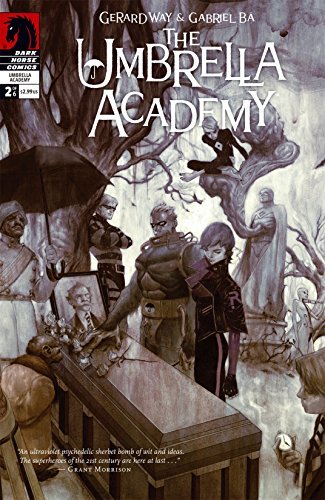
As a distinguished almost-twenty-five-year-old (I’d like to acknowledge that I took a small break here to have an existential crisis) my walls are free of band posters and my eyes are no longer encircled with that thick black eyeliner that always managed to look three days old and slept in, but I still got kind of a thrill when I learned that The Umbrella Academy was being adapted into a Netflix show. It was something I had always assumed I would end up reading, back in the depths of my emo phase (which is probably more accurately defined as a My Chemical Romance phase) but then just kind of forgot about. So, great, I’m simultaneously being reminded that this thing exists, and freed of the nostalgic obligation to go seek out the comic and read it. As much as I love reading, comics have just never been my thing.
Then the trailer came out. Honestly, it kind of killed my enthusiasm. It just looked kind of generic. Apocalypse. Superpowers. Bold characters. Lots of action. My takeaway was a big ol’ “Meh.” Frankly, without my pre-existing attachment to Gerard Way and the very idea of The Umbrella Academy, I highly doubt I would have given it a chance - not because it looked inherently bad, but just because I’m a hard sell on the kind of show it appeared to be.
But it’s Gerard Way, man. I had to watch at least one episode.

The Umbrella Academy centres around the famous-yet-mysterious Hargreeves family. The seven children - six of whom have special powers - were adopted by Reginald Hargreeves, a cold and severe patriarch who didn’t even deign to name them. He made them into “The Umbrella Adademy,” a crime-fighting squad of tiny children who would later dissolve after a tragic incident. Now they’re grown up, and Dad’s dead. His spare and tense memorial is what brings the adult Umbrella Academy back together, and this is where the show kicks off.
We’re treated to a rather clumsy beginning; a gripping opening scene followed by an unimaginative montage. We get a glimpse of each of the Hargreeves’ regular lives, leading up to and including them learning of their father’s death. It’s a heavy-handed introductory roll-call, complete with on-screen name cards. It’s a baffling waste of time, considering we don’t learn anything in this montage that isn’t later reiterated through dialogue or behaviour. We don’t need to see Klaus leaving rehab to know he’s an addict. We don’t need to see Allison on the red carpet to know she’s a movie star. It dragged, even on a first watch not knowing that the whole thing would be ultimately pointless, and I’m surprised no one thought to cut it and let us go in cold with everyone arriving at the mansion for the memorial - an opening that would have both set the tone and let us get to know the characters much more naturally. Maybe it feels like I’m focusing too much on this, and that’s only because it gave me a bad first impression - and I want anyone who reacts the same way I did to stick with it. It really does get better.
The further we got from the montage the less gimmicky it felt, and I started to sense some sort of something that I liked about this show. Stylistically it was interesting, and there seemed to be an underlying depth; room for these characters to be more than brooding ex-vigilantes with daddy issues. I was intrigued enough by the end of episode one to keep watching, and was gratified as the series went on and truly delved into those depths. There was a memorable turning point for me around episode five, where Klaus (the wonderful Robert Sheehan) was given space in the runtime to visibly, viscerally feel the effects of something he had just been through. It sounds so obvious, and so simple, but it’s something that is frustratingly glossed over so often in fiction. You know. Fallout. Feelings.
It wasn’t just that moment, though. Prior episodes laid the groundwork, developing not just Klaus but all the Hargreeves. Each character feels real and grounded, each of them uniquely good, uniquely bad, uniquely damaged by their upbringing. It’s this last point I particularly appreciate, this subtle realism in the show’s execution of abused characters. We see how siblings growing up with the same parents does not necessarily mean they got the same childhood, endured the same abuse, or that their trauma will manifest in the same ways. And certainly, it’s important to see the different coping mechanisms each of them have developed. Furthermore, there is a lot more to each of these characters than just their trauma. There are seven distinct personalities going on, and I have to applaud the writers for this commitment to character. It was largely this that kept me hooked (I’m such a sucker for good characters), and to my own surprise very invested in the way things unfolded.
I love the tone, which found a cool rhythm after the pilot. The pacing was decent and the character development balanced well against the plot. I like the little quirks that remind you of the show’s comic book roots, like Pogo, the talking ape and Five, the grouchy old man in a teenager’s body.
Weirdly, I like the apocalypse stuff, which they managed to put their own spin on despite it being such a played-out trope at this point. I like that the show found small ways to go in unexpected directions, even if the overarching plot and big twists weren’t all that surprising. And most of all I love that in a world saturated with forgettable media, I woke up today still thinking about this show.
Even if not all of my thoughts were so generous.
See, for everything I love about this show, there are also quite a few things that rubbed me up the wrong way. I can’t list them all without going into spoilers, but I think it needs to be said that there are like, a fair few problematic elements in this show. I couldn’t help but notice that while women and people of colour are the minority in this cast, they also seem to cop the worst abuse. Only two of the Hargreeves siblings are female. One of them has no powers and the other’s power is influence (a non-physical power). Their “Mom” is literally a robot created for the sole purpose of caregiving; she dresses and acts like the epitome of a submissive 50s housewife. The Hargreeves sisters are also the ones most likely to be left out or ignored when it comes to making decisions, with one of them even literally losing her voice at one point (yikes!). Beyond that we have some truly disturbing imagery of violence being inflicted on women of colour almost exclusively by white men, and the fact that the only asian character is um… well, he’s literally dead. Before the show even starts.
Overall the problem is not just insufficient diversity, with white men taking up most of the screen time, dialogue and leadership actions, but the way that the few female and non-white characters are depicted.

These are all depictions that, in a vacuum, would be innocuous. I mean, just looking at the root of many of the show’s problems exemplifies that - the root being that all of these characters were white in the source material (uh, a problem in itself, obviously). It wasn’t a problem, for example, when Dead Ben was not the only Asian character but just another white Hargreeves sibling. And wouldn’t it be nice if we lived in a world where you could race or gender-swap any character and have everything mean - or not mean - the same thing. But life is more complicated than that. Art is more complicated than that.
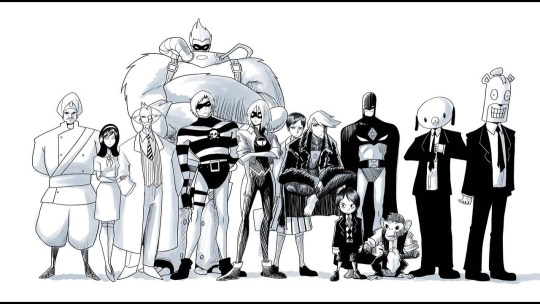
Honestly, I’m not sure if we should give props to the developers of The Umbrella Academy for diversifying their cast when the fact is they did so - and I say this gently - ignorantly and lazily. Race-swapping willy-nilly and leaving it at that ignores a lot of complex issues surrounding the nuances of portraying minorities in fiction, and leaves room for these kinds of harmful and hurtful tropes to carelessly manifest. So many storytellers don’t want to hear it, but let me tell you writer to writer that it does matter if the person being choked is white or black, male or female, trans or cis. It does matter who’s doing the choking. Camera angles matter. Dialogue matters. It’s all a language that conveys a message - about power and dominance and vulnerability in the real world. Because art doesn’t exist inside a vacuum, as inconvenient as that might be. Having the empathy to recognise that will actually make us better storytellers.
In shedding light on these issues, I am not dragging this show. I am not condemning it. And although it is problematic in itself, I’m not even saying it’s problematic to enjoy it. I’m pulling apart the lasagne, looking at the layers, poking and prodding at the individual ingredients and saying, “Hey, the chef probably should have known better than to put pineapple in here. Maybe let’s not do that next time.” I’m also saying, “When I get a mouthful with pineapple in it, I don’t enjoy that. It’s jarring and unpleasant. But it doesn’t ruin the whole meal for me.”
I’m getting better at allowing myself to dislike something on the basis of its shitty themes. To not have to justify myself when something is problematic in a way that just makes it too uncomfortable for me to watch. That wasn’t the case here. I won’t lie; the bad stuff was no afterthought for me. That kind of thing really gets to me. It does ruin a lot for me. But in this case, the show redeemed itself in other ways; mostly by just being a compelling story with characters I liked. I’m trying not to justify that too hard either.
So I liked The Umbrella Academy, and I hope it gets a second season. I also hope that the creators will listen to people like me who want to be able to enjoy their show even more and create more consciously in the future.
And please let Vanya be a lesbian.
The Umbrella Academy is out now on Netflix
Watch this show if you like: witty characters, iconic characters, complex characters, mysteries, dark themes, superpowers, vigilantes, comics, dark humour, epic stories, shows about families, stylistic TV shows, ensemble casts, character dynamics, dramedies
Possible triggers (don’t read if you care about spoilers): suicide, child abuse, claustrophobia, addiction, violence, violence against women, violence against women of colour, death, torture, incest, self-harm, pregnancy/childbirth, kidnapping/abduction, blood, mental illness, medication/themes of medication necessity, blood, manipulation/gaslighting, homicide, forced captivity, guns, hospitalisation, medical procedures, needles, PTSD, prison rape reference (1).
Please feel free to message me if I failed to include a relevant trigger warning and I’ll include it.
22 notes
·
View notes
Text
What Can Happen in 30,000 Words
At the end of March, I was not in the best place with my novel. Yes, it was draft two, but as far as the beginning goes it was pretty much Draft One Part Two. The beginning was necessarily completely different in this draft, and I struggle with beginnings. It’s hard to know what the right starting point is for a story, especially one like mine that requires the reader to have a good understanding of the protagonist’s psyche for the rest of the novel to make sense. It’s tricky. And even while writing this version and not knowing what did need to happen, I already knew that what I was writing was not gonna make it into the final cut. But I couldn’t get to the rest of the story unless I got through at least a beginning. So I kept writing.
And don’t get me wrong, it was rewarding. You can learn a hell of a lot from what doesn’t work, which is kind of the entire point of early drafts anyway. This beginning I knew was not The Real Beginning still served a purpose in teaching me a lot about my protagonist, and at the end of the day that’s not time wasted. It was just not the most fun to write.
But April was coming, which meant the 1kADay Challenge was coming too. If you don’t know, I run a writing challenge every year where participants commit to writing a minimum of 1,000 words every single day for the month of April. There are three main benefits to the challenge. One of them is the group, which provides motivation and support from other writers. Second is that it gets you into the habit of writing a little bit every single day, which I believe is a highly important skill for a writer. Third is that if you keep to the 1k every day, you will have at least 30,000 words to show for it by the end of April.
And where I’m at on the 30th of April compared to the first goes to show just how much can happen in 30,000 words.
From struggling through a less-than-thrilling beginning, I quickly wrote myself into the meat of my story. Since then, I’ve been waking up truly excited to get to my writing every day. I’ve fixed a tonne of plot holes, strengthened the foundation of this fictional world and gotten to know my characters a hell of a lot better. My confidence that this story could be genuinely enjoyed one day has grown exponentially, as has my confidence that I can get it out into the world by the end of this year.
Apart from story benefits, there are a lot of other things I noticed while doing the challenge this year. Most obvious is that I am fucking WAY faster at my 1k than I was this time last year. Let me say off the bat that this is because 1kADay is based off of my personal practice, which is to say that I push myself to write 1,000 words most days all year round, so it’s my consistent daily habit that has improved my writing pace and not just two years of doing the one-month-long challenge. However, the challenge itself is supposed to be a jumping-off point for developing the habit of writing daily, so it still all comes down to the same thing, point being that last year I would set two hours aside to reach my 1k and struggle to do so. Now I don’t even need half an hour.
There are so many other benefits to writing daily, all of which show themselves during this challenge: it’s easier to jump back into your story after 24 hours than two weeks. The writing itself gets better. You get inspired more often, even if it’s for other projects (tip: write your ideas down but don’t let yourself get too distracted). Often, once you’ve reached your 1k you will have gotten yourself into the groove of writing and will want to keep going. You wake up with purpose and go to sleep knowing you’ve accomplished something. You’ll prove to yourself that you can commit to something and see it out.
And, of course, when you do something daily the progress shows much faster. In terms of this challenge, that means you’ll have 30,000 words of story in just one month. If you’ve never written that many words of one story before, it will surprise you how much your story will grow right before your eyes in the space of thirty days. All the scenes you thought belonged but don’t fit anywhere. The characters and plot points that pop up out of nowhere. The good surprises and the bad.
What I’m trying to get at is that I think this is a really great challenge, if I do say so myself. I personally always get great things out of participating - and they’re always different. I also love providing this opportunity for other writers - especially young ones, especially those having their first shot at a novel - to kind of learn how to be a writer. I didn’t have anyone to tell me that being a writer meant you had to like, write. Consistently and without dependence on the muse.
I learned later than I would have liked how to actually finish things, and I would like to pass on that knowledge any way I can. This challenge, I believe, is a great start.
That’s why I’ve decided I’d like to host the 1kADay Challenge again this year, this time in September, with more preparation and higher participation. I would love to have the group active all month long with updates, questions and support from our members, and lots of prompts, motivation and advice from my end. But you don’t have to wait til September! The group is always open and active, reinforcing the 1kADay philosophy all year long, so please feel free to join us now!
*If you’d like to support me and my writing, you can do so by signing up to my Patreon or buying my book! <3
0 notes
Text
Inspiration and Absorption: The Elusive Input-Output Balance
Ever since I learned how to work, I’ve been a workaholic. Oh how I love the feeling of getting under the covers at night and knowing in your bones that you have earned that good night’s sleep. But beyond that, I love my work. Because I love art. I love stories.
The thing is, that love of stories can sometimes get in the way of writing them, because if there’s anything that can steal my passion for the book I’m writing, it’s the book I’m reading.
Anyone who has ever lost themselves to a book knows what I’m talking about. Every so often we come across a story that just captures our imagination and holds on for dear life. It’s all you can think about, and it’s all you want to talk about. The characters take on a life of their own. You want to inhale the entire story but simultaneously dread getting to the end. And when it does end, you feel like you’ve left a chunk of your soul in those tear-stained pages.
This is, to me, one of the most precious experiences we have as humans. And to be honest, the miracle of reading itself never ceases to amaze me. You understand these symbols I’m typing and that’s fucking insane. So the fact that they can do so much more than be understood... The fact that they can make one think or laugh or cry... The fact that ink on paper can make one’s heart race... I don’t ever want to take that for granted.
But here’s the dilemma: as a writer, it is important to read. And it is important to read things that interest you, inspire you and excite you. Reading good writing is one of the best ways to become a better writer yourself. But sometimes a book comes along that is so good it pushes the stories you’re trying to tell clear out of your brain.
I’ve been working on draft two of my novel Baby Teeth for a couple months now. It’s only draft two, so my characters are still forming and my story is still in the process of revealing itself to me. I’ll have to go through several more drafts before I can see it all clearly. And that doesn’t mean I don’t love it, but it’s delicate. It’s a tender lil sprout that I’m gently guiding in the knowledge that one day I’ll be able to see all it’s branches in full. Couple that with the legendary novel fatigue (becoming bored with the story you’re telling, usually exacerbated by becoming excited by a fresh idea) that almost all novelists experience and I was ripe for distraction. All I needed was a good book... Perhaps a trilogy?
Late last year I read The Farseer Trilogy. Actually no, I devoured it. At the time I wasn’t working on a novel but on various smaller projects. It was the period between publishing my book of poems Crying on My Birthday and beginning NaNoWriMo, during which I would write draft one of Baby Teeth. So there was no harm in spending a good amount of time reading. And I did.
I thoroughly enjoyed book one, and by book two I was completely obsessed. But once I was finished the trilogy I made the - honestly wise - decision not to read the next one (there are three separate Fitz trilogies) yet as I was about to start writing my own novel and didn’t want my attention divided. It wasn’t too painful to wait since each trilogy is essentially self-contained and there were no cliffhangers left to resolve.
So I got to work on my novel, finished draft one and read a bunch of standalone books in the meantime, and to be honest most of them were mediocre. And I think because a few months and a few books had passed since I had finished Assassin’s Quest, I had forgotten just how addictive those books were. I didn’t think about the fact that I was working on draft two of my book. I didn’t think about the fact that I was about to start my 1kADay Challenge. I didn’t think about the whole reason I didn’t continue the series back then. I honestly was just fed up with ‘meh’ books and wanted to read something that I just knew I would enjoy.
But I don’t think enjoy is the right word for my experience of these books.
The second I opened Fool’s Errand (Book One of the Tawny Man Trilogy), I was overwhelmed by this feeling of comfort and familiarity. All the feelings the original trilogy had brought out in me came rushing back in, and this time they were even more intense. And soon that sense of comfort was overtaken by the tension of a new and exciting plot. There were times reading these books when I actually felt like I was going to have a damn heart attack - and those weren’t even the action scenes. The characters became so real to me that the interpersonal dramatics were more significant to me than any fight scene.
None of this is new to me. I had a Nimbus 2000, man; I’m no stranger to the heady magic of fiction.
But the last time I was this immersed in a series must have been 2015 or so, when I finished A Song of Ice and Fire. I’ve always written, but I’ve only been working full time as a writer since the end of 2016. I’ve never had to balance this overwhelming addiction to a fictional world while simultaneously trying to create my own.
At least, not to this extent. I have had tastes of it while reading magnificent standalone novels. I have known the struggle of wanting only to read. And also the struggle of being so inspired by a piece of work while simultaneously feeling dwarfed by its greatness. How could I ever make my cult-centred novel as profoundly terrifying as Orwell’s 1984? How could my prose ever reach the realm of dizzying beauty that Nabokov achieves in Lolita? And how can I tear myself away from these sickening, incredible stories for long enough to even try?
Let me say now that I do manage. It’s not that I give up on life and stay in bed all day reading when this strikes me. Life goes on. I get my 1,000 word minimum done every day. And when it’s a standalone novel it’s not such a big deal. You can spend the few days to a week it takes you to finish it feeling less thrilled than usual about your own work and it won’t hurt you. But there are nine huge novels in Fitz’s story. That’s weeks of absorption, if not months. And while I can still get my writing done in the meantime, a story that consuming can make you feel almost as if it’s the only story worth telling. Which is stupid. Which is why I keep writing regardless. But the fact is I just don’t think it’s possible to maintain an obsession with a story you’re consuming and a story you’re writing.
And maybe it doesn’t matter when all is said and done. As long as you can focus on your writing while you’re doing it, does it matter if you spend the rest of your time obsessing over someone else’s?
I think perhaps it’s not so important in the early drafts. But when I am in the process of actually writing the story as it is finally, forever meant to be, then I may have to go on a book fast until it’s done.
And as someone who creates in many mediums, I know this is a common problem. You can fall so hard for a piece of art that for a time it almost feels like... This is The Perfect Thing. Why would anyone bother to make anything else? Or maybe there’s the feeling of, Why am I writing a sci-fi novel? Clearly I should be writing a fantasy series!
It’s times like these when I understand fan fiction very well. That temptation to create within the confines of somebody else’s world is not so damaging to some. If you’re not interested in making worlds of your own then it is just a fun, indulgent creative exercise. But when you’re an artist with your own stories to tell, that obsession can be a slippery slope.
And yet, we artists also need that. How can I write a story that captures people’s imaginations in such a way if I’ve never experienced it? How can I tell a page-turning story if I’ve never read one? And how can I create compelling characters - something dearly important to me - if I don’t know how it feels for a character to climb out of the page and into your life?
To be honest, I don’t have the answers. Like all things in life, there is a balance to this, both necessary and elusive. I’d like to hope one day I’ll find it.
I’m extremely curious to hear your thoughts on this! Have you read a series lately that held you prisoner until you finished it? Or maybe even a TV series (I haven’t watched a good series in a very long time so I’m safe from this at the moment)? How has it interfered with your writing? Do you have a strategy or are you as lost as I am? Let me know!
Psst! Did you know I have a writing group that not only hosts the 1kADay Challenge throughout April but also runs throughout the year to provide support, inspiration and motivation for all kinds of writers? Request to join here!
1 note
·
View note
Text
The Evolution of “Twin Peaks” (and why it excites me)
As an avid David Lynch fan, I expected to love Twin Peaks. I had been meaning to watch it for ages when Twin Peaks: The Return was announced, and that was the kick up the arse I needed to get me to sit down and watch this show that I just knew I would love.
But I didn’t. Although there were parts of the show that I loved, as a whole I could never really make my mind up about it. Sometimes I was rapt, sometimes I was bored and sometimes I couldn’t help but cringe. It wasn’t what I had expected coming from Lynch’s films, which were unapologetically disconnected, dreamlike and disturbing.
Twin Peaks did carry over plenty of Lynchian elements. The camp, the melodrama, the American dichotomy; the sense that there are cracks in our world and a whole other reality is leaking through. But overall, it felt to me like what it was: David Lynch watered down for mass consumption.
I have to admit that I got to a point in season two – which is notoriously messy – where I was pretty much just letting the episodes play in the background. Unsurprisingly, the only episode that managed to recapture my attention was the finale which Lynch returned to direct.
And sure, I could have turned it off, but I had this feeling that The Return would be different. The feeling I had while watching the original series was that this was not the world of Twin Peaks as an unrestrained David Lynch would have it. It was made in the early 90s and was aired on network television. I later learned that my hunch was right. There had been loads of network interference and even Lynch himself has said that the only part of that whole series he was really proud of was the movie-length pilot.
Again, let me reiterate that I do not dislike Twin Peaks. It’s just that even now I’m not quite sure how I feel about it. I guess I would say I like it? I appreciate its significant cultural influence? There are times when Twin Peaks is heady and magnificent and those times had a profound effect on me but sometimes it was a struggle to actually watch?
So I finished season two. Hallelujah. But before I could get to The Return I had to get through Twin Peaks: Fire Walk With Me. Yes: get through. That’s how season two left me feeling. Since Fire Walk With Me was released only a year after the show was cancelled, I wasn’t hopeful for much of a change.
Um, yeah. I was wrong.
Twin Peaks: Fire Walk With Me was everything I had wanted from the original series. Dark, unflinching, mind-melting and deeply tragic. With a soundtrack that wraps itself around you and doesn’t let go, this film immerses you in the unbearable horror that was Laura Palmer’s life and ultimate death.
Fire Walk With Me is a prequel that can easily stand alone, while also expanding the story we know and daringly contrasting it. It transformed from something I had to “get through” to one of my favourite movies ever. Suddenly I felt vindicated – this was what I had been waiting for all along.
The whole experience of Fire Walk With Me was a confirmation of my initial feelings, that Twin Peaks could be right up my alley without the censors and soap opera.
And so finally, excitement renewed, I moved on to Twin Peaks: The Return.
Eighteen hours of television, filmed as a whole and split into parts. From its very conception it was decidedly unique, and the entirety of The Return from its development to its content to its themes are – like it or not – a masterclass in the triumph of creative control; something Lynch definitely did not have during the run of the original series.
The Return could have been – like most reboots, remakes and revamps – a total nostalgia wank. The iconography of Twin Peaks is such that David Lynch could have chucked a few cups of coffee and a cherry pie in front of a camera and made a profit. But anyone who watches The Return can say with confidence that whoever made this show doesn’t care about profit, doesn’t care about ratings, doesn’t care about anything but realising their artistic vision.
Sure, some of those people would also say that Lynch’s work is an exercise in frustration. I won’t ever deny that when David Lynch makes something, he is being totally self-indulgent – but why is that inherently such a bad thing? In my opinion, the first function of art is expression. To write your thoughts in a journal, draw a picture or take a photograph; all creation is self-indulgent. Whether or not other people connect to or benefit from it will always come after.
I’m sure many – if not most – of the fans of the original series hated The Return just like they hated Fire Walk With Me (which was booed at its premiere). They wanted the cosy diner, the love triangles, the young, beautiful people. We want to be coddled and comforted by our consumption, but David Lynch has never been here to comfort us. Quite the opposite, actually.
Twin Peaks: The Return was not so much Twin Peaks as it was David Lynch at his most Lynchian. And that, above all the things I loved about the series, is what excited me so much to watch. Minutes-long scene of someone sweeping? Sure. A woman chasing a mosquito around the room? You betcha. Rendering your beloved main character brain-damaged and mute for most of the season? Obviously.
I think the most exciting thing about Twin Peaks – and David Lynch – is the refusal to be comfortable. The original series was a pivotal pop culture moment. The Return could have cashed in on that without a care, but instead Twin Peaks continues to be ground-breaking in each and every one of its iterations. And the fact that David Lynch never set out to innovate the medium of television is exactly why he has managed to do so twice in thirty years. While a perfectly-executed three-act-structure story can be the most riveting thing in the world, a piece of art that pays no regard whatsoever to what are considered to be the rules is a great reminder that the only limit is our imagination; the key to making the madness work is simply committing to it.
Right after I watched the finale, I tweeted:
“Twin Peaks: The Return avoided missing the mark because it chose to ignore the mark altogether. And that's why I love David Lynch.”
NOTE: I know that Twin Peaks is not solely David Lynch’s project. I do acknowledge the importance of Mark Frost as co-creator and all other contributors, however this piece serves as my perspective specifically as a David Lynch fan.
1 note
·
View note
Text
One in Ten: Living With Endometriosis
At eighteen, Rhiannon should have been bright-eyed and beginning her adult life. Instead, she was bed-ridden, depressed and pumped full of hardcore painkillers to manage her severe and mysterious chronic pain, which affected her legs, pelvis, abdomen and back. She’d always had painful, heavy and sporadic periods, but now she was never not in agony. It wasn’t until she underwent an invasive laparoscopic surgery to have an ovarian cyst removed that she discovered the reason: Rhiannon – like one in ten women – suffers from endometriosis.
Endo-meat-tree-what-us? Endometriosis. Despite the fact you probably know someone who has it, I’m guessing you have no idea what it is. Well, endometriosis is a condition in which tissue similar to that which lines the uterus grows elsewhere in the body. This invisible illness – which can be life-altering and debilitating even when managed properly – has neither a known cause nor a known cure. And despite being as common as asthma or diabetes, those who suffer with endometriosis – almost exclusively women – fail to get the treatment they need.
Though the reasons for this are complex and plentiful, the most crucial component of any issue is awareness – you can’t fix a problem if you don’t know it exists. That’s why I decided to sit down and have a chat about the realities of living with endo with my sister Rhiannon, who has not only endured the illness for fourteen years, but managed to thrive in spite of it.
That wasn’t always the case.
Rhiannon’s first sign that something was wrong was a period that came every two weeks instead of four, and was brutally heavy and exhausting. She went to the doctor and was assured that this was normal (hint: it’s not) and she would just have to get used to it. Over the years, her period became more than frequent and irregular. It became debilitating, forcing her to spend entire school days in the sickbay with nothing but ineffective Panadol to quell the hot, raking pain.
This, too – she was told – was normal. (It’s still not.)
But by seventeen, the pain was no longer contained to the days in which she was bleeding. She went to the doctor again and finally she was granted some tests, which eventually led to her diagnosis – eight years after that first symptom.
Eight years sounds like a long time, and it is. Yet the average is actually TEN years. How does that even happen?
When you live in your body every day, it doesn’t take a genius to know when something’s not right, but Rhiannon has had her pain dismissed by doctors in a million different ways. She was told it was normal, it was all in her head, the pain would go away if she just lost some weight. She was labelled as a hypochondriac instead of receiving the help she needed. This, sadly, is not the exception but the rule when it comes to the diagnosis process for endo and many other women-specific maladies.
The fact is, doctors are not sufficiently educated about this illness or how to diagnose anything more mysterious than a head cold. They are trained to write prescriptions, not to solve puzzles. If your problem can’t be fixed with a pill they just don’t know what else to do with you, and so it’s easier to simply write you off as hysterical.
And girls are so used to feeling shitty we don’t demand better. It’s drilled into us from pre-puberty that everything is gonna hurt. You’re gonna bleed from your vag, then you’re gonna push a human out of it, then you’re gonna go insane for a year or so while your eggs dry up. Also, you’re gonna be paid less than a man for no reason and have your heart broken a couple dozen times. Womanhood is pain.
That’s the story, and it’s what gets us accepting burdens we don’t have to carry. This means getting women to recognise that their symptoms are actually symptoms and need to be diagnosed is hard enough, getting a doctor who’ll take you seriously is harder, and if you can get that far, actually getting diagnosed is, in itself, not easy.
It can only be truly detected through laparoscopic surgery. If you go through the public system you’ll go on a lengthy waiting list. If they do find endo – and not finding it doesn’t mean it’s not there – they will remove it at the same time. This may provide some relief, but it’s not a cure by any means.
After Rhiannon’s first surgery, she was told that they had found and removed endometriosis. That was all the explanation she got. No one told her that it would most likely return – she thought she was cured, and was treated to a few blissful months of feeling healthy for the first time in almost a decade.
You can imagine how harrowing it was when the pain returned. She ended up not only in her GP’s office but also in the emergency room, having experienced pain attacks so intense she didn’t know what else to do but call an ambulance. No matter where she went, no one knew what to do with her. She was told by medical professionals that endometriosis could not be causing this reaction because she had already had every inch of it removed in surgery (blatant misinformation). It didn’t seem to matter that all her symptoms – chronic pain, vaginismus, irregular periods (where the pain was even worse), painful bowel movements, nausea and more – were strongly associated with endo, and that there was no reason whatsoever that it could not have returned. The widespread ignorance and misinformation about her illness caused her several more years of tears, stress and yet more pain.
Finally, after ongoing doctors’ appointments and doing extensive research of her own, Rhiannon came to terms with the fact that she did, in fact, have endometriosis – a chronic illness that she would live with indefinitely. She had always thought that she was pursuing a diagnosis so that she could be fixed. She couldn’t have anticipated that the diagnosis would be the worst part – that the life she had envisioned for herself was no longer an attainable reality.
Chronic pain and fatigue meant any conventional job was out of the question. This brought on a feeling of hopelessness and uselessness that came not only from inside herself, but from others who couldn’t reconcile the image of an externally fine young woman with a person in crippling pain. Much like mental illness, it’s not easy to drill into people that just because you look one way on the outside, it doesn’t mean you’re healthy. Even people who understand in theory struggle to support in practice, becoming frustrated when you dare to actually show symptoms. The fact is that a person who suffers from an illness cannot be reliable in the same way a healthy person can, but it’s hard for humans to conjure sympathy when the visual triggers aren’t there. If you trip over and get a head wound your friend will understand why you can’t come to lunch – they’ll probably even ask you if you need anything. Invisible illnesses are trickier, and can cause a lot of internal shame, guilt and social anxiety.
The depth of this subject can make your head spin. It encompasses so many issues – feminism, mental health, invisible illness, the medical industry. Sex and addiction come into it, and so does compassion and empathy. My biggest takeaway, though, is the strength of women, and I witness this in my sister every single day.
From being bed-bound, to a close call with prescription painkiller addiction, to finally rediscovering her real passions and pursuing them wholeheartedly, Rhiannon is a shining example of the power of a positive mindset. It’s about, she says, focusing on what you CAN do – acknowledging your limitations without creating ones that don’t exist, and realising that happiness is a choice you make and not something that just happens.
Rhiannon has written stories since she was a kid, but decided like so many of us to pursue the more conventional career path. She was heartbroken when she realised that she wouldn’t be able to work as a midwife – but a few years later she had an epiphany: although she had an interest in nursing, it had never been her true passion. Now, Rhiannon is a full-time writer. And really, she was always supposed to be one. Some days she still can’t do much more than curl up in bed with a hot water bottle, but she is making her own rules, chasing her dreams however she can. And that is so fucking powerful.
Special thanks to Rhiannon Fontana for sitting down with me to talk about this. Please check out https://www.endometriosisaustralia.org/ for more information, mark March down in your calendar as Endometriosis Awareness Month and share the love! Share this article, make a donation or just reach out to an endo warrior and let her know you’re there.
You can also support Rhiannon by purchasing her novel, Oblivion, here.
1 note
·
View note
Photo
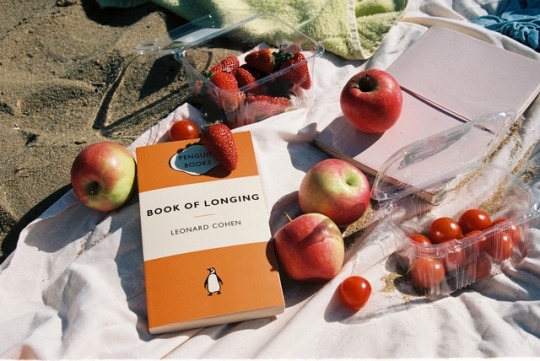








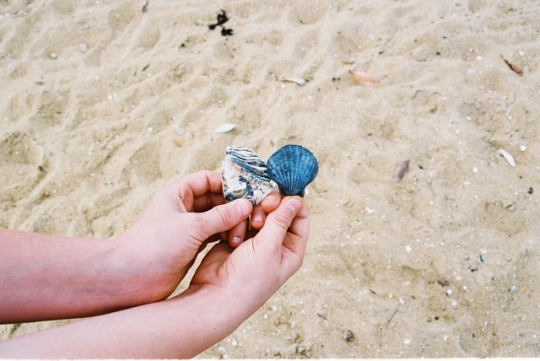
Things | Top Film Photos 2017
See: Places | People
“Things” is a hard category to define, but here it is.
1. Book of Longing, which quickly became one of my favourite books of poetry and is an A+ beach read. My journal. Apples. Strawberries. Cherry tomatoes. Full.
2. Does a body of water with the sun reflecting dreamily off it count as a thing?
3. Let’s hope so.
4. Veggies at the farmers’ market in Launceston. My mum loves this photo.
5. Disco ball at the Gasometer. I told you it was a gay 90s rave.
6. Yellow roses in a public garden in Launceston.
7. Sorry to the florist for photographing these roses but not buying them.
8. Backyard greenery.
9. I walked around the neighbourhood with a jar and a pair of scissors and cultivated this bouquet. Still one of my greatest achievements.
10. Some shells Connor found at Mentone Beach.
What next? Check out the other posts in this series:
Places
People
And moments | twentyseventeen - a video of moments from this year
#photography#film photography#35mm#35mm film#film#photographer#blogger#blog#writer#writers of tumblr#love#adventure#travel#2017#art
5 notes
·
View notes
Photo


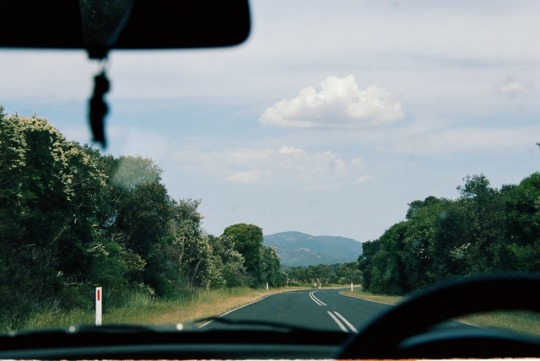


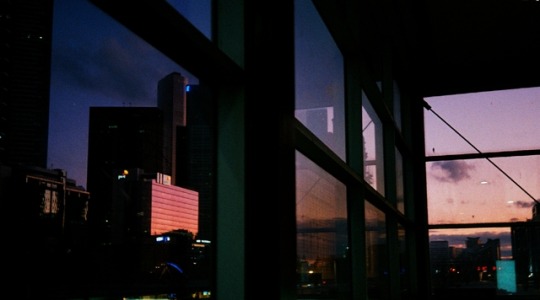

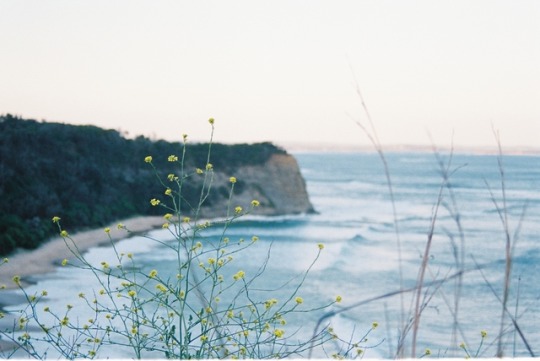


Places | Top Film Photos 2017
See: People | Things
I saw my fair share of interesting, odd and downright stunning places this year, which made this category of photos the absolute toughest to choose from. But when push came to shove, these were my favourite Places photos of 2017, she types while sweating, crying, regretting everything.
1. Sunset at Sandringham Beach. Victoria, Australia.
2. Cataract Gorge. View from the bridge. Tasmania, Australia.
3. Driving through Wilsons Prom National Park. Victoria, Australia.
4. Launceston Airport. Tasmania, Australia.
5. Sunset/Moonrise. Mount Eliza. Victoria, Australia.
6. Top of the escalator. Flinders St. Station. Victoria, Australia.
7. Cataract Gorge hiking trail. Tasmania, Australia.
8. Clifftop at Inverloch. Victoria, Australia.
9. Rhododendron Gardens. Victoria, Australia.
10. Sunset at Mount Eliza. Victoria, Australia.
What next? Check out the other posts in this series:
People
Things
And moments | twentyseventeen - a video of moments from this year
#photography#film photography#35mm#35mm film#film#photographer#blogger#blog#writer#writing#writers of tumblr#love#adventure#travel#2017#art
3 notes
·
View notes
Photo

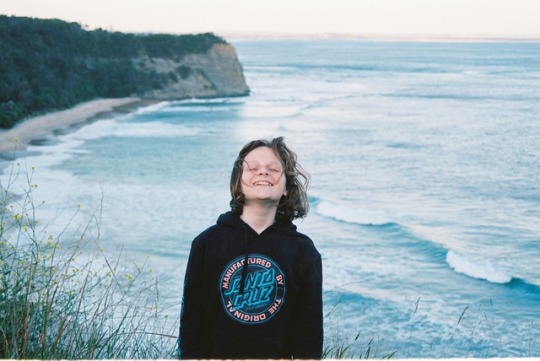


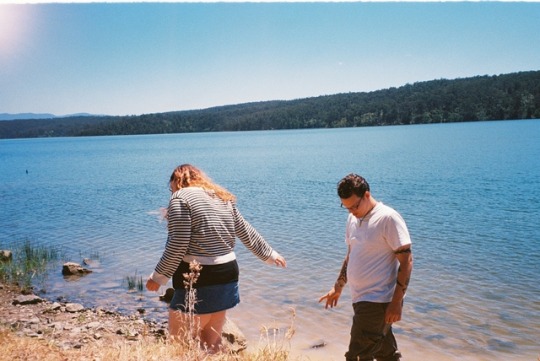
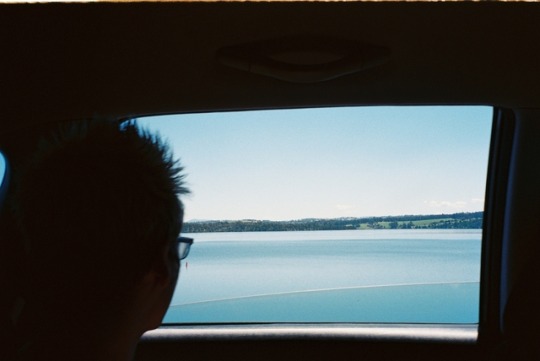




People | Top Film Photos 2017
See: Places | Things
Film photography kept me going this year. It kept me curious and humble, and my hunger for a gorgeous shot led me to a lot of places I would never have seen otherwise.
I’m a writer first, but my words are something I have complete control over. As a perfectionist, this can drive me pretty mental at times; I could spend an eternity combing through a story or blog post changing this or that word and never feel done. While my perfectionist tendencies come out at the editing stage of film making (I don’t really edit my photos unless I have to alter exposure), there is an urgency about capturing a moment that will never come again, having limited film or space on your memory card. When you’re behind the lens, you are capturing something rather than manufacturing it. Even in a controlled shoot, you are still limited by time and tools. Writing can only be limited by your imagination, and while that’s freeing in some ways, it can be terrifying in others.
These visual mediums are creative outlets that allow me to follow my instincts without so much pressure to be perfect. I know I can’t control the weather or the set of someone’s teeth or whether they blink just as I’m pressing the shutter. It doesn’t mean I don’t strive to be better, and I would love to do some planned shoots next year, but I guess because I don’t define myself as a photographer or cinematographer it takes a lot of the pressure off to be revolutionary. I just do what feels right.
But enough about that.
I was going to choose ten photos overall, but that proved to be literally impossible. Instead I’ve chosen thirty overall, divided into three categories. The first is People.
One of my favourite things about taking up this hobby is the beautiful pictures I’ve snapped of my loved ones. I’ve always dreamed of taking photographs that captured the specific energy of a person or a moment, and when I look at these ones I feel like I’ve done that. These are photos I love of people I love.
1. Avalon. Gasometer Hotel, Collingwood, Victoria, Australia. Minolta Dynax 500si. Kodak ULTRAMAX 400.
This girl is a whirlwind in the best kind of way. Interested and interesting. Kind. Spontaneous. Ridiculously beautiful. She’s unlike anyone you’ve ever met; a girl who turns heads wherever she goes and knows it, who isn’t afraid to tell strange men that she’s the CEO of a radical feminist magazine and laughs at their feigned support (she doesn’t care what they think). That very magazine is how we met online; I became a regular contributor and she flattered me when we met in person by telling me that she’d told her workmates “If I fall off this ladder, the magazine goes to Holly Way!”
That night we went to a feminist zine launch that was definitely more of a gay 90s rave and I danced in a club for the first time in years. The photos I took were risky - the girls were dancing and the smoke was thick - but even the blurry ones have an energy to them that I love. Moving subjects will give you some duds, but so much more life in the good ones.
2. Connor. Inverloch, Victoria, Australia. Minolta Dynax 500si. Kodak ULTRAMAX 400.
Connor was so bloody stoked with this view, and I feel so warm when I look at this photo and his huge, genuine smile.
3. Stuart. Squeaky Beach, Wilsons Prom, Victoria, Australia. Minolta Dynax 500si. Kodak Portra 120.
If you want a glimpse of how much I - and the rest of my family - love Stuart you can watch this video I made for him for Christmas. Basically we had only met his British ass once before he moved into our house for twelve weeks. Luckily he turned out not to be a murderer but rather the most lovely, genuine, polite and cheerful dude you’ve ever met. It was devastating when he left - almost a month ago now - but the group chat is still going strong. More importantly, we’ll always have the memories of him reading us A Street Cat Named Bob on Squeaky Beach as the sun went down.
4. Rhiannon. Inverloch, Victoria, Australia. Minolta Dynax 500si. Kodak ULTRAMAX 400.
With the year we’ve had, it’s an indescribable pleasure to see my sister smiling and happy. On this particular day five of us drove to the coast, ate watermelon and baguettes on the beach and just escaped the rising tide at the end of a dusty pink dusk. On the way home we put on my ultimate sing alongs playlist and screeched Tribute and Bohemian Rhapsody at the top of our lungs. What could possibly be better?
5. Rhiannon and Brendan. Blue Rock Dam, Victoria, Australia. Pentax Espio 955, Fuji Superia X-TRA 400.
Another example of moving subjects. An imperfect shot with tangible mood.
6. Stuart. Blue Rock Dam, Victoria, Australia. Pentax Espio 955, Fuji Superia X-TRA 400.
The hour or two we had to ourselves at this outlandishly gorgeous dam are some of my favourite hours of all time. Stuart had a swim and gave us all heart attacks when he brushed up against a branch (thanks bitch) but other than that we were just so... relaxed. Climbing trees, eating, baking in the Aussie heat, telling dumb jokes and having Stuart read to us again. Then a bunch of bogans showed up with their dogs off the lead and disrupted the serenity, but whatever.
7. Beren. Cataract Gorge, Launceston, Tasmania, Australia. Minolta Dynax 500si. Kodak Portra 400.
This photo is from the first colour roll of film I ever shot. We surprised our family by showing up unexpectedly to celebrate Dad’s 50th and stayed for a few days. It was bittersweet as we had just lost our cat, Evie. It was a hard time, but spending those few days with our dad and siblings we rarely get to see made a difference, as did spending time in Tasmania, which has become a beautiful second home to me. I like the composition and natural feel of this photo, and just the fact that it’s one of my favourite people in one of my favourite places.
8. James. Red Wood Forest, Victoria, Australia. Minolta Dynax 500si. Kodak Portra 120.
I have a feeling this was either on or just after Easter, but I really can’t remember. Either way this place was absolutely magical. Even though this photo is blurry (the ISO of this film was not a good fit for a forest on a cloudy day) I just think it’s cool. I love getting action shots of people focusing on something, just natural and in their element. Watching James experiment with the camera has always been one of my favourite things to do. Also, he looks so fucking grown up in this picture.
9. Nienna. Tamar Wetlands, Launceston, Tasmania, Australia. Minolta Dynax 500si. Kodak Portra 120.
Definitely one of my favourite memories from this year; getting up before dawn to catch the sunrise at the wetlands with Dad and Nienna. It’s the kind of thing I’d do way more often if I had a car, as there’s something so beautiful about being at mercy to the cycles of the sun to get your photo. And we weren’t that lucky. It was overcast as hell and we got maybe a few minutes of a few slices of pink sunlight through the clouds. But that didn’t matter. We got photos that felt different than we expected and had a wonderful adventure in the meantime. To be separated from my sister so greatly in both years and distance but still manage to have such a strong bond and so much in common is something I am so, so grateful for.
10. Georgia. Home, Victoria, Australia. Minolta Dynax 500si. Kodak Portra 120.
This photograph makes me feel so many things. I grabbed it while Georgia was reading out a bit of her novel to Rhiannon and I, and it was just a moment that was so close and pure and poignant that I couldn’t help but try and capture it. That connection is what I treasure most about my relationship with Georgia. Ever since we were kids I feel like our bond has been free of judgement and pretense. She’s one of the few people I feel I can be all of my selves with instead of just choosing one suitable side to present. We don’t see each other nearly as much as we should, which makes moments like these all the more special.
What next? Check out the other posts in this series:
Places
Things
And moments | twentyseventeen - a video of moments from this year
#photography#film photography#35mm#35mm film#film#photographer#blogger#blog#writer#writing#writers of tumblr#love#friendship#adventure#travel#family#2017#art
12 notes
·
View notes
Text
2017 or How To Be A Depressed Piece of Shit and Still Get Stuff Done
I’ve been putting this off. Partly because I’ve accomplished so much this year I just know I’m going to forget to include many of those accomplishments in this post. But mostly because this year has been fucking hard. It’s impossible to look back on all my achievements without also feeling how lost, angry, lonely, confused, betrayed, anxious, depressed, bereaved etc. I was while conquering these goals.
I could go into the nitty gritties of it all, but this isn’t a self-pitying post. This post exists because no one – including me – gave enough of a shit when I actually did these things, which I did while grieving, while battling mental illness, while trying to be a good person, while living in a situation that does everything it possibly can to deter productivity. And fuck, man, I am choosing now to fucking appreciate myself and all the amazing things I did this year. Things I only ever dreamed of doing in some distant someday.
I am also making this to provide a little bit of motivation for anyone who is in the same position I was in a year ago – thinking “I would love to actually make a living as an artist but I’m too scared to share my work.” Well, here are a few tips for you, including:
1. Don’t be a fucking idiot. If you’re too afraid to share your work you will never get recognised. You will never get feedback. You will never get better. There is no magical time where you’re going to feel 100% ready. Sit down, work on something you care about until it’s done to your standards – or as close as it’s ever gonna get – and choose someone to share it with. Bonus points if it’s someone you know will be honest with you.
2. Whatever your craft is, practice every day. If you’re a writer you must write every day, even if it’s just keeping a journal. Practice does not make perfect and it would be boring if it did. Practice simply ensures that every day you’re alive you are getting better. Besides, the consistency with which you work makes the difference between a professional and a hobbyist. Decide which one you really wanna be.
3. Support other artists. Subscribe to Patreons. Watch people’s YouTube ads. Like and reblog/retweet. Share the things you love – and make sure you include the source. I’m going to write a whole article about this, but what goes around comes around. DO NOT expect people to support you if you’re living in your own little bubble not making an effort to support anyone else. (But also don’t expect the people you support to give your energy back to you. You can’t control other people. Support because you genuinely want to and not on an unspoken quid pro quo basis.)
4. Make sure you take time to study your craft. This is different from practicing. For example, as a writer and future director I watch many film analyses, and when I watch TV and film or read a book my brain is always combing through the details. If you’re a painter, for example, take trips to the museum and study – actually study – paintings. You should also switch off sometimes and just exist. Just feel life, textures, colours. Breathe. You cannot be outputting content all the time. But with that said…
5. Work motherfucking hard. There’s a terrible saying, “Do what you love and you’ll never work a day in your life.” It’s utter bullshit. Most people who are passionate about their career work harder, longer and with more mental awareness than almost anyone. Caring about the thing you’re working on is fucking exhausting, and if you’re not prepared to work hard then see above; you may be a hobbyist and not a professional. That is perfectly fine. In fact I wish I had the luck to be able to continue writing in that capacity, where it is just a fun personal project and not a succubus consuming my life. But alas.
6. Deadlines can help with projects, but don’t put time constraints on your success – whatever that is to you. Even working harder than anyone has ever worked will not grant you instant gratification. I have been a serious, working writer for almost a year and I am not earning a living AT ALL. That is not unusual. I have laid the foundation for my career, and that ain’t nothing, but that’s something I have to remind myself every day. These things take time. And with this in mind...
7. The work must be the reward. I’ll say it louder for the people in the back: THE WORK MUST BE THE REWARD. Probably a lot of this is to do with my mental illness, but when I first held Crying on My Birthday – my book of poems – I felt… nothing. Same when I finished National Novel Writing Month. Same when I finished the first draft of my first novel. Same when I finished the first draft of my second novel. Same 90% of times people tell me they couldn’t stop reading my stories. I acknowledge those things on a logical level, but they don’t warm me. But you know what did feel like something? Cultivating those works. Writing those poems, getting to know those characters, those moments when the story just opens up to you and tells you where it’s going. I also feel a certain satisfaction when I reread my own work after a long time; a kind of, “Oh. I wrote that?” The point is that just like New Year’s and Christmas, the big moments rarely feel like they should. If you hate the process of writing, don’t be a writer. As challenging as it is, I love writing. It’s one of the only times when my mind is focused on only one thing and not an exhausting swirl of every problem ever posed to mankind. And hey, maybe one day I’ll reach a milestone that feels significant, but to be honest I doubt it. In general I suck at feeling what I’m supposed to. The. Work. Must. Be. The. Reward.
So where did these principles actually get me in 2017? In just under twelve months, here’s what I made happen:
- Conceptualised, wrote, edited, formatted and published an anthology of poems all within three weeks.
- Completed National Novel Writing Month (50,000 words of a novel in the month of November) then proceeded to complete the almost 80,000 word first draft by mid-December.
- Finished the in-depth episode outline of the television series I’m writing with my sister.
- Edited and formatted my sister’s novel.
- Got published in HighGloss Magazine, became a regular contributor of articles and poetry.
- Joined a writing group, met other writers, published an anthology together which featured my short story.
- Began to edit the charity anthology I’m publishing. (Still accepting submissions.)
- Got offered a job as a copywriter. (Stay tuned.)
- Wrote my first ever short story which I entered in a competition (didn’t win, whatever).
- Wrote two more short stories.
- Wrote a thriller novella which I published on Wattpad on a chapter-per-week basis.
- Wrote, edited and published several poems online. I won’t go into how much each one of them means to me and how much courage it took to share them.
- Wrote a poem for my friend Sarah, still one of my favourite things I’ve ever written.
- Wrote a piece of fiction for my friend Hayley.
- Hosted the “1KADAY” challenge, which went on to become the online writing group I run.
- Created my first short film.
- Took up film photography, something I am so ridiculously in love with.
- Returned to/fell back in love with the gym after so many years of letting my anxiety get in the way.
- Read twenty novels, probably a quarter of which became some of my all-time favourites.
- Vastly improved my French.
- Curated some bomb playlists that people loved.
- Drove again for the first time in years, got closer to getting my license.
- Read my poems out loud to people I care about.
- Learned several songs on my shitty keyboard, learned to play badly and sing without shame.
- Wrote a tonne of lyrics.
- Somewhat maintained this blog. Somewhat.
- Got up the guts to make a Patreon.
- Helped others with their writing whenever I got the chance.
- Made art that helped people. Made art that helped me.
- Never gave up.
- Proved to myself what an unstoppable badass I am. Like seriously what the fuck I’m amazing.
- Survived this fucking year.
P.S. I won’t be making a 2018 goals blog. I realised that what I achieved in 2017 differed so greatly from (and far excelled) what I intended to do that there was no real point projecting into the next twelve months what might happen. I find it much more productive to sit down at the start of each month and week and get my priorities straight.
youtube
#2017#reflection#writer#writing#blog#blogger#mental health#productivity#poets of tumblr#writers of tumblr#writing tips#lifestyle
2 notes
·
View notes
Quote
This place is not a home
nor a holiday. No comfort to me
is the generous shade of a gum tree
on these salted days of summer.
And I can appreciate the wattle,
but I am heartgiven to mellow spring
and not the plague heat of a sunburnt country
on a battered orange coast.
What do I write?
What do I know?
There is no Australia leaking
through the colour of my prose.
Not one you would recognise
in your Ireland or America.
I am hours from real ocean
and years from real life.
And I grew up over bitumen,
under the weeping willow,
plucking tender street plums
and baking on the hot tin roof of the shed.
Which Australia is that?
What essence did my skin pull from the dirt and turn
into homespun thread that dragged me
from my childhood to my now?
How much iron is in my blood?
If I hadn't gotten drunk on Victoria Bitters
beneath The Saucepan on Invasion Day
would my words come out the same?
What does it cost?
Native fauna of an unfamiliar land;
it has forgotten itself! And we have forgotten it threefold,
abandoned history and landscape
and fled to the coast
for water and trade.
What does it cost
to steal a child
and hate it into whiteness?
A new leaf. Tear out the last few hundred pages, ask them why they're so goddamn angry all the time.
(They have it so easy! A helping hand in high school! How lush! How entitled!)
What does it cost?
We the white saviours!
(We the peasants!
Turned thieves!
Turned explorers!
Turned settlers!
Turned thieves!)
And the reef, she is dying,
the earth torn up for coal.
The obliterators shall inherit nothing.
What nerve to expect that this place should feel like home.
“Why Did We Build on A Burial Ground?” by Holly Way
#mine#poem#poetry#writing#writer#writers of tumblr#poets of tumblr#spilled ink#spilled words#australia#writers of australia#young writer#female writer
4 notes
·
View notes
Text
50,000 Words of Baby Teeth
I have a problem with feeling my accomplishments. Throughout National Novel Writing Month I’ve completed 15,000 words in three days on two separate occasions, and now I’ve hit 50k goal two days before the deadline. And that’s 50k exactly, by the way.
Yet I don’t feel any different than the day I decided to partake in #NaNoWriMo.
I could blame it on my headache, or the fact that nothing matters. But probably most responsible is the fact that Baby Teeth is not a 50k word novel, and so at the end of this challenge I have maybe half of a first draft done. And tomorrow I’m going to wake up and continue writing so that this first draft is finished by the end of the year. Essentially, December is going to be another #NaNoWriMo for me. With that still ahead of me it’s hard to feel like I’ve completed something. I guess that’s why I’m writing this; to solidify for myself that I set a goal and I met a goal, and that means something.
It means I am a person who does what they say they are going to. In the past year that’s a quality that has become incredibly important to me. I meet my deadlines, I fulfil my commitments. Possibly even more importantly, I pride myself on not saying yes to things I’m not committed to at heart, or anything I genuinely know I can’t do in time. I’m a woman with conviction, and that matters very much to me.
And it wasn’t easy reaching that 50k. I had a busy November, to the point where I couldn’t even write every single day. That in itself was an easy excuse to call it quits early on. If I had been able to I would have only had to average about 1600 words a day to reach my goal, but as it happened I was forced instead to stockpile words whenever I could, hence the 15k in three days nonsense (I know that’s an average of 5k each day but hear me when I say I am a dreadfully slow writer. That is a big number for me).
Hardest of all – of course, as always – was the story. I seriously despise first drafts. As a perfectionist and a romantic of the arts I balk at the fact of the matter that you must write your shitty, plot-holey, thin, messy, clunky stream of consciousness first draft in full before you can get to the truth of your characters. I mean sure, I could decide the plot and then just make my characters do what I need them to in order to get the plot from point to point. But why would I want to? The only stories I care about are ones where the plot is driven by the realistic actions of the characters. That’s why series like A Song of Ice and Fire are my favourites, because the story happens as a result of the characters’ choices and not the other way around.
I think a lot of people assume that characters just spring up in an author’s mind fully formed, and while I can’t speak for other writers I can say with certainty it doesn’t happen that way for me. That’s not to say I can’t see them clearly or know who they are at heart. It’s more like I can see their soul but not their armour. It takes a while for me to understand how they navigate the world and why. And the first draft is really just me experiencing the world through their eyes. Creating some steps for them to walk and seeing how they tackle them – one by one? Or three at a time?
For that reason the first draft is absolutely vital, but it doesn’t make it any less infuriating. I know most writers hate the rewriting and editing stages. Many love the first draft because they get to just spew their story out uninhibited. But personally, while the first draft is rewarding, it is only so because of what I can use it for later. Writing a first draft is creating raw materials out of thin air; everything after is easier because you have something to work with.
At this point in the story I have a much better handle on who my protagonist is and why he is that way. I’m still getting a handle on his outward personality, and I still have no idea what he’s going to do to end the story; which parts of his nature he’s going to give in to. I do for sure – due to getting to know him and the world and other characters around him – have a much better idea of where the story is going before it ends. Just in the last few days I’ve felt a stronger emotional tether to the story, because my protagonist has found his tether also. So despite the fact that I’m exhausted and feeling generally terrible, I’m excited to finish the rest of this first draft, and I’m grateful for #NaNoWriMo as I definitely wouldn’t have this work to show for my month if it weren’t for this challenge. I had kind of vowed not to write a novel this year actually, but here I am and I don’t regret it one bit.
With any luck, Baby Teeth will be out by the end of 2018.
#nanowrimo#writing#writer#blog#blogger#creative writing#writers of tumblr#spilled ink#spilled thoughts#thoughts#text#creativity#young writer#female writer#writers of australia
2 notes
·
View notes
Text
Embarking on #NaNoWriMo with “Baby Teeth”
To be honest, I totally forgot National Novel Writing Month was a thing. Last year was the first I’d heard of it, and it had happened to fall on the window of time in which my sister and I were intensively editing her debut novel (Oblivion, now available on Amazon) but I wasn’t actively challenging myself to write a 50,000 word novel by the end of the month. It was pretty much just business as usual.
So yesterday - November 1st - when I stumbled across a #NaNoWriMo tweet, I was faced with the need to make a rather abrupt decision. And weirdly, a little bit of a serious one.
See, I’ve been on a bit of a break. Which is weird for me. Usually my breaks are forced upon me by depressive episodes and are forced to an end so I can suck it up and meet deadlines. But about midway through October, I realised all my deadlines were met. Every. Single. One.
For the first time in forever I had nothing hanging over my head. I also found myself in a living situation that was and is non-conducive to work. And so I decided, hey, why don’t I just chill out. Read some books. Live some life. Get my shit together before diving into compiling my charity anthology “Seeds” during November.
And now it’s November, and am faced with the choice of continuing to take it easy and just focus on the one thing, or challenge myself to write a whole lot of novel by the end of the month.
If you know me at all, you probably don’t need to ask what I decided.
Because despite my shitty mental health and imperfect conditions and already feeling overwhelmed, the fact is I function better when I have something to focus on. When I’m being productive. When I’m creating. And so I’m both terrified and thrilled to be embarking on #NaNoWriMo with the goal of producing at least half of a first draft by December.
After much consideration, I decided to begin writing “Baby Teeth” (working title). “Baby Teeth” is a sequel/world continuation of a short story I wrote earlier in the year called “The Evolution of Professor Lincoln” . The novel concept actually predates the short story idea, however writing the short story did help to develop that world in a way that made me itch to dive into the novel.
I didn’t get home until one in the morning last night (or, you know, this morning) but still managed to smash out the first thousand words of the novel. I actually got a feel for the story straight away which is unusual for me, and I’m currently on the train on my way to my weekly writing group and I’m incredibly keen to get there and get stuck in. I know I won’t always feel this good about it because novels are a fickle beast, but as long as I write something every single day I’ll be content.
Let me know: are you joining in on #NaNoWriMo and what are you writing?
3 notes
·
View notes
Text
Depressed Characters vs. Depressed People
My first thought when I woke up today was “I wish I hadn’t.” Consequently it’s almost 5pm and I haven’t showered, eaten or done anything remotely productive. I’ve spent all day in bed, trying to breathe away this dense rock of bitter awfulness in my chest. In fact, if my laptop hadn’t happened to be in the bed next to me, I wouldn’t be writing this right now. On a worse day, I wouldn’t be writing this regardless; I would just continue switching between numb dissociation and guttural sobbing until I exhausted myself enough to sleep for twelve straight hours with the vague hope of waking up better tomorrow.
So what’s my point? Well, in the midst of my shitty, boring, black hole of a wasted day, I suddenly thought “no wonder we don’t get depressed characters.”
I know there are a plethora of films that specifically focus on a character’s journey with their mental health. It’s set in a mental hospital or follows a mentally unstable teenager. But rarely do these characters suffer from depression alone. Usually, they are given a more “exciting” diagnosis like schizophrenia or multiple personality disorder. Furthermore, this is not the kind of representation I’m talking about. It’s niche representation, which is not the same as diversity. What I wanna see is a Marvel superhero whose weakness is not their dead parents but their hereditary clinical depression that spontaneously incapacitates them for varying periods of time. It’s not their entire arc, it’s just one piece of the puzzle that makes them who they are; another obstacle to overcome.
But the problem is this: depression is an unpredictable, frustrating, debilitating and fucking boring illness. It’s repetitive, it’s bleak, and when you have an episode nothing exciting happens. You don’t go on a homicidal rampage or start verbally abusing cashiers. You just wake up non-functional, or blink and find yourself numb and detached from reality.
It’s hard enough to find a film with a disabled character who isn’t defined by their disability, so when you consider that depression is still widely misunderstood and genuinely invisible, it fits the Hollywood M.O. to simply exclude depressed people from the role of protagonist.
But just as with any group that is underrepresented, the problem with the absence of accurately depicted depressed characters – who are well-rounded, who have purpose, whose story and life doesn’t revolve around their depression – is that it isn’t challenging any of the many misconceptions people have about the illness. Whether it’s that depression is not real or valid, depressed people are lazy, depressed people are selfish or wilfully negative – people who do not have it themselves are not getting a window into the experience.
And my favourite thing about art is that window. When I watched The Aviator, I was so disturbed and discomfited by its depiction of Howard Hughes’ obsessive compulsive disorder that I was moved to do further research into it. This was not a “mental illness movie,” but simply a great film about a complex, ambitious man who accomplished an astonishing amount in his life despite his mental illness. Good art very delicately provokes our empathy and opens up avenues of understanding for people we haven’t known and lives we haven’t lived. Those of us who suffer from an illness as disregarded and misunderstood as depression could really benefit from writers tapping into that ability.
Unfortunately that doesn’t change the fact that depression is not a juicy, exciting, psychologically titillating illness to portray. A standard rule of writing is to never include a scene that contains no tension, conflict or plot advancement, so how do you write a character who becomes essentially useless at the drop of a hat and spends days in bed trying to pick themselves back up? How do you make it worth the audience’s while to stick by a character who must adhere to a strict routine of boring, basic self-care to stave off the next episode as long as possible? Many writers would say it’s simply not doable, or not worth the effort. But as someone who both suffers from depression and works hard, laughs heartily and thrives in spite of it, I know that there are wonderful, captivating and exciting protagonists who just happen to have depression who are waiting to have their stories told.
I’m tired of seeing depressed characters who are problems for the protagonist to solve. I’m tired of seeing so-called depressed protagonists who are merely sulky; whose lives are never thrown off the rails by an unexpected episode; who never finds themselves isolated because they were too afraid to ask for help or because they scared everyone off by being honest.
I want to see – and therefore will write – characters who are saving the world, making something worthwhile, growing up, setting out, discovering life, discovering themselves. And hey, not all of them will be straight, white, able-bodied, neurotypical cis dudes. Because depression is hard to write, but it’s harder to live. It’s time for writers to challenge themselves to show the world something different. Something real. Something that can make a difference.
I’m interested to hear other opinions on this. Do you think there already exists some characters with a greater arc who just happen to have depression as one of their many challenges? Do you think there are any that come close? What are some aspects of having depression you wish would be addressed in media? Send me a message or reblog with your thoughts!
#depression#mental health#mental illness#writing#writers#writers of tumblr#spilled ink#spilled thoughts#spilled words#thoughts#blog#article#representation#diversity#writing tips#blogger#writer
0 notes
Text
CALL FOR SUBMISSIONS - SEEDS ANTHOLOGY
Holly Way and HighGloss Magazine are working in collaboration to create Seeds – an anthology of poems written by passionate people who want to create change.
What is it?
Seeds exists for three main purposes:
1. To give writers from all walks of life and experience levels an opportunity to be published in a real, physical book that they can cite as experience and share with the world.
2. To give those same writers a platform to make their case for a cause. Seeds seeks to use the power of the written word to educate, inspire empathy and mobilise readers to take action.
3. To raise money for a charitable organisation, which will be announced with the release of the book. All profits from sales of the book will go to this organisation, meaning that even the act of purchasing Seeds is making a real difference.
Who can submit?
We are looking for anyone who has ever wanted to change the world, but more specifically we are looking for poets and illustrators/graphic designers/visual artists; especially women of colour, disabled women or anyone else with an under-represented worldview. You will not be asked for a resume or prior experience; you will be judged on your work alone, so please do not hesitate to submit your work. You have nothing to lose!
Poetry guidelines:
- First and foremost, your poem must be about a specific cause. It must be specific in that it is an issue that can be directly tackled and not a broad philosophical dilemma. For example, feminism is much too broad whereas girls’ education, sex worker treatment and sexual assault are all subcategories of feminism that can be tackled with direct action. There is a time and place for the discussion of broad issues and existential concepts, but Seeds aims to provide its readers with concise pathways of action as opposed to just food for thought.
- Don’t appropriate culture or trauma that isn’t your own in the name of raising awareness. Let people speak for themselves wherever possible.
- If you have resources or organisations you trust for the cause you’re talking about, please send them through with your submission.
- You can submit poems that have been previously published on personal blogs or social media, but we will not be reprinting any works previously published by external publications (magazines, literary journals, anthologies).
- Poems do not need to adhere to any particular format. There are no restrictions on language or content. You can explore your themes using metaphors and indirect prose, so long as there is clear subtext relating to your cause; remember it is to evoke empathy and awareness that will inspire action. Your poem can be as long or as short as you desire.
- A query email is not necessary, however please be aware that we will not publish more than one poetry submission about the same subject. With this in mind, you may want to pitch your poem concept before your write the poem to ensure that it has not already been taken.
- To submit your poem, send an email to [email protected] with the subject line “seeds poetry submission” and the following information: your name, your age, your country of residence and information about the cause you have written about. It doesn’t have to be extensive, just enough to clearly state what your poem is about. Attach your poem as a word document. If you do not receive a response within 7 days please feel free to send a follow-up email.
- Please be aware that this is a charitable endeavour and your poem will be treated as a donation; you will not be paid. You will, of course, receive full credit, including a bio in the book.
Cover art and internal illustration guidelines:
- We are looking for artists who can bring their design concept to the table and collaborate with us to develop a beautiful, eye-catching cover that suits and enhances the contents.
- We are looking for both a cover design AND illustrations to accompany each poem. You can apply to do one or the other or both; it’s up to you.
- If applying for the cover, please send an email to [email protected] with the submission line “seeds cover pitch”. In the email, include your name, age, country of residence and describe your idea for the cover design of the book. Include a mock-up image if you desire (sample image not necessary but will provide a deeper understanding of your idea and therefore a greater chance of your work being selected). If you do not receive a response within 7 days please feel free to send a follow-up email.
- If applying for the internal illustrations, please send an email to [email protected] with the submission line “seeds illustration interest”. In the email, include your name, age, country of residence and attach examples of your work. If you do not receive a response within 7 days please feel free to send a follow-up email. The illustrations will be black and white sketches that accompany the poems. They will have to complement the poem they accompany, meaning that the illustrations cannot be completed until submissions close on.
- Please be aware that this is a charitable endeavour and your artwork will be treated as a donation; you will not be paid. You will, of course, receive full credit, including a bio in the book.
- Submission cutoff to be announced.
#writing#writers#writers of tumblr#activism#publishing#get published#freelancing#poetry#poets of tumblr#poem#poems#anthology#spilled ink#young writers#writing opportunity#charity#poetry community#bleedink#passion#love#positivity#creative writing#creativity
5 notes
·
View notes
Audio
May Soundtrack
As outlined here, I have had fucking crazy month. I myself might have actually gone crazy if it weren’t for beautiful, beautiful music. As usual, this playlist is a mixture of both new releases and old reliables. During my time in Tasmania, music has been Triple J in the car, the headphones blocking out the library hubbub (for example, that time a guy was coughing pretty much to death and a woman sat tutting and muttering in the corner because… he should have died in his own time, I guess?) and the background noise to me and my siblings’ extensive Mario Kart tournaments.
While you listen, here are some words about a few standout tracks…
“Coachella – Woodstock In My Mind” by Lana Del Rey – I count myself lucky every single day that I get to be alive at the same time as Lana, but having her actually sing (and talk) about real issues and collective pain is an unbelievable blessing. In fact she was so passionate about the subject matter of this song that she wrote it on a whim on the way home from Coachella. It’s not even going to be on the Lust For Life album – she just thought it was important to share it with us now and I can see why. It’s kind of like therapy in times like these.
Favourite Lyrics – Maybe my contribution // Could be as small as hoping // That words could turn to birds and birds could send my thoughts your way.
Feels Like – We don’t have to fight
“Eyes Closed” by Halsey – This is a great song that gets me keen as fuck for Hopeless Fountain Kingdom, but do yourself a favour and listen to the stripped version on Vevo as well. It’s not necessarily better; it’s almost not even comparable. I had intense chills the entire time I was listening to it, and while the original version has the same haunting lyrics, I can listen to it without wanting to bawl. I love the production on this tune – you can definitely hear The Weeknd’s influence in there (he co-wrote the song) but not to the extent where it feels like she’s singing someone else’s song or genre. Their styles mesh together really beautifully, and the more I listen to this song, the more I get from it.
Favourite Lyrics – I know where to lay // I know what to say // It’s all the same
Feels Like – Hard liquor, flickering candles
“Atlas Drowned” by Gang of Youths – Onto an entirely different sound now. I’ve been slowly getting into Gang of Youths over the last few months and this new track has the same great kick of rock and punchy lyrics you’d expect. I’m proud to see some fellow Aussies getting political – it just goes to show how universally fed up we are with the current status quo, and since art is the leader of change, it really gives me hope for our future. I just love this band and can’t wait to keep diving deeper into their music.
Favourite Lyrics – The whole institution is rigged // And the ship’s going down
Feels Like – We can take ‘em.
“Each Time You Fall In Love” by Cigarettes After Sex – There’s just something so beautiful about this song. As someone who likes to fall in love with strangers for five minutes but not anyone who’s real to me, I feel it in my bones. The simplistic, slow melody really gets under my skin. It’s the kind of song I’d listen to on a solitary night drive to nowhere.
Favourite Lyrics – And each time you kiss a girl // You never know what it’s worth // You say all of the words they want to hear // It isn’t real.
Feels Like – Looks that linger, passions that fade, loneliness held close to the chest.
“Told You So” by Paramore – Man what a song! I love “Hard Times” but this one grabbed me so fuckin’ quick, and I still get super excited every time it comes on. And of course, Paramore not only have these two singles but a whole new album – which I’ve added to the playlist in its entirety so I can keep listening to all of it over again. After Laughter is a fantastic album. It’s Paramore, so of course the lyrics are smart and meaningful, but it’s also so fucking fun and boppy, and pretty much exactly what I was expecting from this album based on the singles from it. And now I’m just impatiently waiting for them to tour Australia again so I can see them slay this record live.
Favourite Lyrics – I know you like // When I admit that I was wrong and you were right // At least I try // To keep my cool when I am thrown into a fire.
Feels Like – Integrity in a bitter world
“Bellyache” by Billie Eilish – With her lovely voice, catchy tunes and snappy, insightful lyrics, Billie has been all over my playlists. She is doing something truly smart and different with pop and it’s très exciting to me. This song is so dark and so fun at the same time, which is right up my alley. Here’s hoping for an album by the end of this year!
Favourite Lyrics – Everything I do // The way I wear my noose // Like a necklace // I wanna make ‘em scared // Like I could be anywhere // Like I’m reckless.
Feels Like – The kind of Kill Bill reboot I would watch
#blog#blog post#music#music lover#soundtrack#playlist#spotify#listen#lana del rey#halsey#gang of youths#cigarettes after sex#paramore#billie eilish
2 notes
·
View notes
Photo










Tasmania Film Photos & Life Updates
Canon Sure Shot 85 Zoom // Kodak Ultramax 400
What a positively insane month May has been. It started on a surreal note with me becoming a published writer. HighGloss Magazine not only picked up one of my articles but took me on as a regular contributor. I’m commissioned to write four articles for them every month, which is an incredible honour. I’ve been a huge fan of the mag for ages and it’s super validating to be working for a publication that I myself love and respect. It’s a bit dizzying to actually have an audience read what I’m writing, which gives me the opportunity to start some really important conversations.
I’m still a long way from making a living outta this, but this is a huge first step and a bloody good start.
As thrilled as I was and am about it, I doubt the timing could have been any more chaotic. Where I’ll usually have a whole month to do my articles (which means I can balance it out with my other commitments), the day I found out about it all left me with about three weeks. No big deal, right? It wouldn’t have been, except I was already scheduled to spend a week in Tasmania for my sister’s birthday. Not ideal but hey, I can just plan out my articles before I leave, spend the week with my family and then go home and have ten days to smash that deadline!
Yeah… Nah. We missed our flight home. This resulted in a few days of my sister and I stressing about how the hell we were gonna get back to Melbourne and how we were going to afford a third set of flights when we’d struggled to obtain the initial two. I wasted a couple of days like this – thinking about how I was going to get home and work – before I realised that the best thing for me to do was just stay here and work. My sister went home, but I knew that if I kept worrying about getting home then I would never get any work done – and now I was down to a week. Instead, I decided to just roll with it, spend the next week at the Launceston library and worry about getting home when I no longer had a deadline hanging over my head.
So that’s what I did. With no phone (it spontaneously broke for literally no reason a few days into our trip. Thanks Apple!), one pair of pyjamas, one workout outfit and one regular outfit, I stayed put. I fought fatigue, stress, self-doubt, time constraints, PMS, period pain from Hell and the voice in my head that told me the reasons were stacking up for me not to do this and no one would blame me for giving up. And here I am – still stranded in Tasmania, but on the other side. I have to say, I’m fucking proud of myself. A few years ago I would have thrown my hands up in the air and taken the opportunity to slack off. Nowadays I’m much better at recognising what is and isn’t in my control; my phone dying, getting stuck in Tasmania, getting my period at the worst possible time and having limited hours in a day to work were out of my control, but getting my work done regardless was most certainly in my control. I focused on what I could control and let the rest flow around me. As a result of that seriously tough week, I now have four articles I’m proud of polished and submitted – and I even stuck to writing, editing and posting a chapter of my novel (which you can read here) as well, when it would have been so easy not to bother. It ended up being my favourite chapter of the book so far. No regrets.
On top of the actual work, I learned some really important things about myself and my productivity which will be invaluable in not only high-pressure situations but just my daily routines as well.
And yeah, all this is pretty much irrelevant to the above photos, but I’ve been a little off the map lately (can’t talk to anyone unless I’m on my laptop, can’t post to Instagram where I’m usually the most active and just haven’t had the time to be active on social media in general) and this is why. Besides, I just wanted to share this crazy little story in case someone needs it. If you don’t give up, you won’t fail. Even if you put everything into it and don’t get the desired result, you will at least be able to say you gave it your best shot. It’s worth it for that fact alone.
So let’s get to the photos, shall we? On our second day here, we found a tub full of point and shoot film cameras for 50 cents each in an op shop. Needless to say, I bought three. This is the only one I’ve tried out so far – the Canon Sure Shot.
It felt strange to be using such a compact and simple little camera. I got a surprise when the shutter whirred instead of clicked, but apart from that I got used to it quickly. It has only a few settings – mostly flash or no – and I’m really impressed with the photos. I used Kodak Ultramax 400 for these, which was perfect indoors or with the overcast sky. If you look at the unedited scans of the Portra 160 roll I had in my Minolta, you can see the exposure is far more balanced on the Canon. I learned some valuable lessons from this which I go into in my Minolta Top Ten post here.
Again, I was quite shocked at the quality of these photos. Obviously they don’t offer the same control or resulting detail of my Minolta, but that’s not necessarily a bad thing. You can see what’s going on, but it still retains that retro sort of 90s look that one associates with film. I adore my Minolta, but sometimes I’m looking for a little more grit and personality as opposed to technically correct compositions. It’s good to have options. Now I have the Canon, my Minolta and my Polaroid 600 to choose from I’ll have much more creative freedom that I can’t wait to explore. I also have three more point and shoots to test! Although to be honest, it might come down to film, or plane tickets…
#photography#film photography#film#film photos#i shoot film#film is not dead#mine#blog#blog post#35mm
1 note
·
View note
Photo





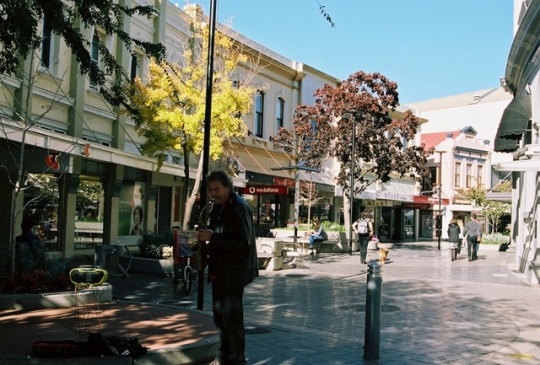




More Tassie Film
Minolta Dynax 500si // Kodak Portra 160
If you wanna know where the heck I’ve been, what I’ve been doing and what the photos from the camera I found in an op shop look like, click here. If you wanna read some stuff about learning curves with film, keep reading!
I love film, I love this camera, I didn’t love these photos. At first. Now that they’re edited, they’re marvellous, but I’ve never had to edit my film photos before. I was so disappointed that these ones needed it, but meh, I’m over it now. It taught me some really important things. For example: ISO fucking matters.
I’ve read extensively about film photography, but sometimes you can’t fully understand how something works until you see it NOT work. I knew that I had ISO 160 in my camera. I knew that it’s a film intended for portraits in perfect sun or studio lights. I knew I only got 160 because 400 wasn’t available and that 160 was not ideal for the cloudy or dusky skies I was working with, but so what? Isn’t that what auto’s for? It’ll make up for it.
Um… No. I’m still wrapping my head around all the reasons why, but I definitely have a better understanding of how the film speed, shutter speed and aperture all work in unison. It also motivated me to finally get around to using the manual mode on my camera, and I’m really interested to see how these shots will come out. Again, I’m sure plenty of them will be terrible, but they will increase my understanding of the settings on my camera and ultimately give me more control over the final image.
Although I’ve been shooting film all year, I’ve only had four rolls of film developed. I’m very much a beginner still and eager to continue making mistakes so that I can learn from them. I now know for sure that if I’m going to keep my camera stocked for random shots (without knowing the lighting in advance) I should really stick to ISO 400. I may also switch from Portra as sometimes I feel it tones down the colours a little too much when shooting landscapes and non-people. It’s not an effect I hate, but I’d be interested to see how my Minolta goes with higher saturation films, as people are not my main subjects at the moment. When I am able to shoot more portraits, Portra will be my go-to for sure.
These photos were captured at the farmers market, city parks, Launceston streets, magnificent dusks at home and the wetlands at sunrise. They are memories of evening strolls and racing out of the house to capture the raging sunset. Oh how I love film photography, even if they sometimes come out like this (originals in order of above appearance):


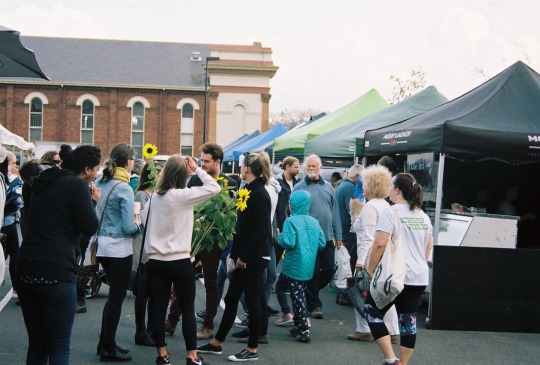







Now if you’ll excuse me, I’m off to watch some more film tutorials on YouTube.
#photography#film#film photography#film photos#blog#blog post#writing#writer#exposure#film is not dead#i shoot film#mine
2 notes
·
View notes